Eager to maximize the quality of your output? Make those 'difficult' print jobs possible? Achieve higher quality in faster print modes to boost your productivity? Then add Global Graphics Software's award-winning PrintFlat™ technology to your workflow today for outstanding image quality. Our PrintFlat technology is available with ScreenPro Core™ and SmartDFE™.
Features and benefits
- Boost sales now
- Expand the range of acceptable print jobs for your digital press
- Increase utilization and reduce wastage for your customers
- A quick and cost-effective solution, PrintFlat technology reduces development time and gets you to market quickly
- Differentiate your product on print quality – be the market leader and set the quality standard
- Boost productivity now
- Achieve higher quality in faster print modes - use 2-pass mode with PrintFlat to achieve 4-pass quality in multi-pass printing
- Increase up-time and reduce service calls with a simple print-and-scan calibration process that can be performed by any end user as often as necessary
- Faster, more effective Service and Support visits, with greater added value
-
Reduce cost now
-
Create and maintain print quality through software rather than hardware
-
Reduce the need for redundant printheads (single pass printers) or interlacing and micro-weaving (multi-pass printers)
-
Extend printhead life and reduce warranty claims – compensate for changes during a printhead's lifetime without impacting performance
-
-
Open system
- Easy to integrate, RIP and hardware agnostic - complements any workflow, RIP, drive electronics or print head
- Flexible independent solution - not tied to any one manufacturer's product
- Apply your branding and customization
- Maximum image quality
- Designed specifically for inkjet resolutions and drop sizes and using our latest novel enhanced screening algorithms
- Free from the rendering artifacts and defects inherent in error diffusion, structured and cached screening solutions
- Produce clean, natural looking images with excellent reproduction of textures and detail
- Smooth consistent uniformity
- Generate accurate tone reproduction across the entire printhead array to eliminate banding and achieve flat uniform tints
- Automatically fine-tune every individual nozzle for uniform density, with density compensation built into the ScreenPro™ halftone definition
- Eradicate defects like visible printhead boundaries, nozzle-to-nozzle variations, printhead end effects, stitch lines, etc
- Accurate color and tone reproduction
- Produce accurate, consistent and stable color across the web from color profiles made with uniform cross-web density
- Achieve enhanced linearity and smoother gradients with multi-level printing, all based on 16 bit linearizations
- Simplicity & reliability
- Minimize downtime, with no engineer required - simple off-press, operator level calibration process, typically taking around 1 hour
- No negative side effects - unlike other approaches, PrintFlat does NOT negatively affect jetting stability, drop velocity, warranty compliance or printhead lifetime
- Greater flexibility and additional tools for Service and Support engineers
- Tune to your press
- Maximize print quality for your digital press(es) by tuning the screen parameters to best suit your configuration(s) and application(s)
- Create and fine-tune your own linearizations
- Use our PrintFlat Custom Advanced Inkjet ScreensTM (AIS) Service for a bespoke solution to create exactly the look and feel your customers desire
- Import your existing screen tiles - all the benefits of ScreenPro and PrintFlat with your existing screen look and feel
QUALITY - why is screening important?
Screening determines output image quality in both binary (single drop size) and multi-level (several drop sizes) printing. Poor screening will introduce image artifacts, which are inherent to old generic screening algorithms, as well as accentuating print defects, highlighting issues such as mottle, chaining and streaking. Good screening will be free from artifacts and hide print defects, producing clean, natural looking images with excellent reproduction of textures and detail.
| Standard error diffusion | Global Graphics Software's unstructured screen |
|---|---|
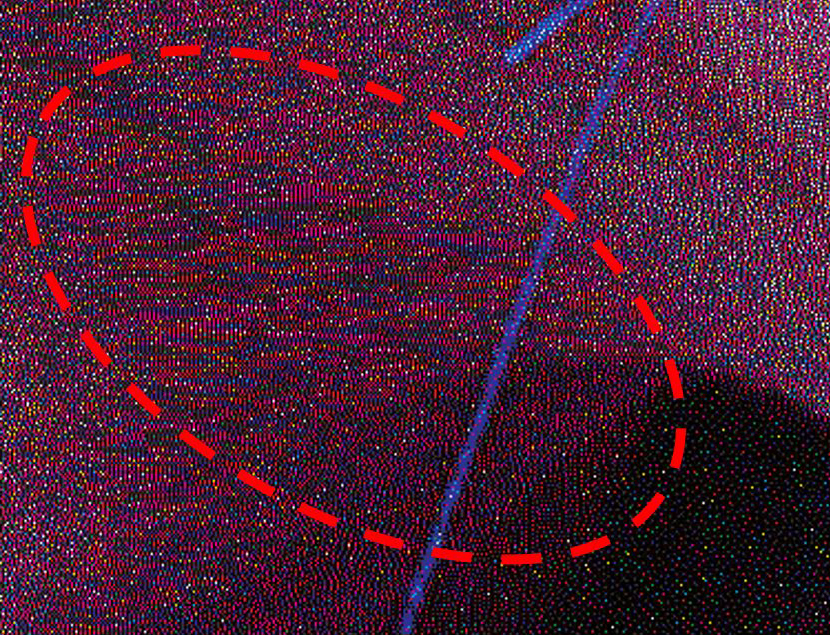 |
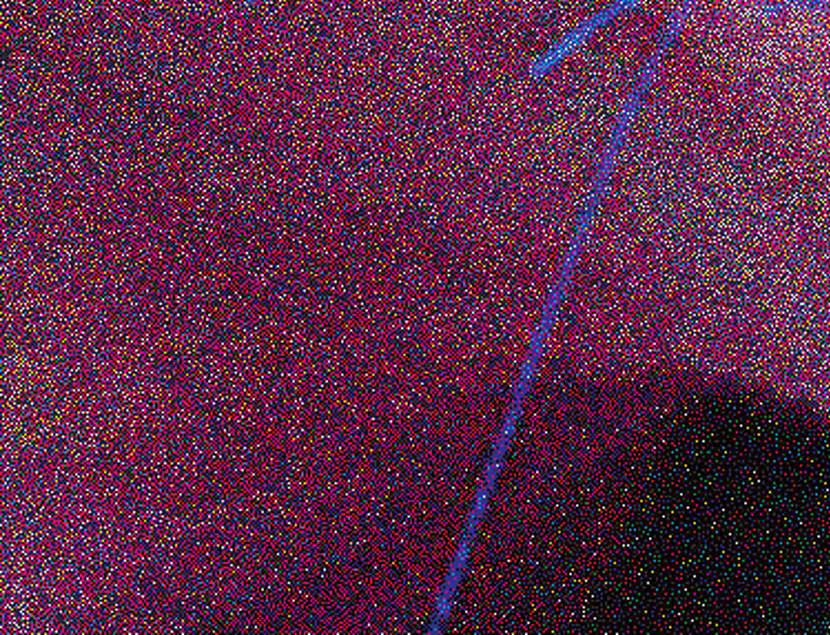
|
|
Screening-induced mottle is clearly visible with the standard error diffusion screen, but not present with Global Graphics Software's unstructured screen. |
|
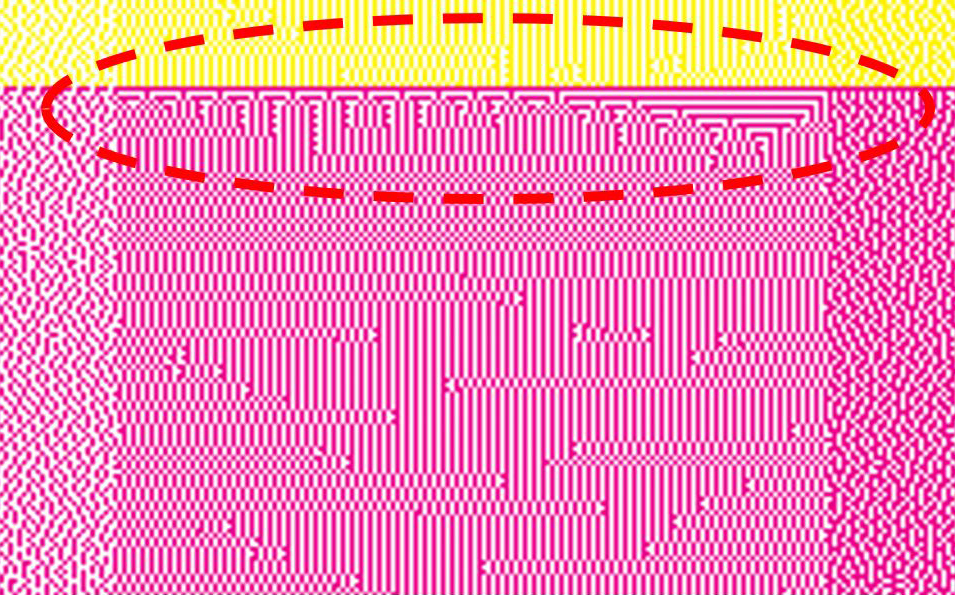
|
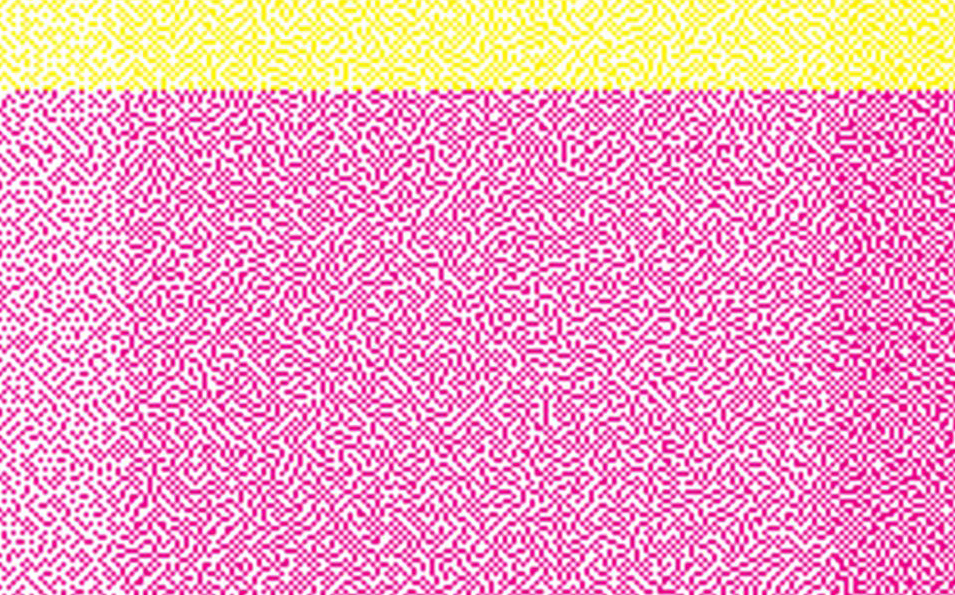
|
|
An edge artifact is clearly visible with the standard error diffusion screen, but not present with Global Graphics Software's unstructured screen. |
|
Screening controls the distribution of ink tone amongst nearby droplets. Most current screening was not specifically developed for modern digital inkjet printers and typically such basic screens simply place ink in the manner prescribed by the screen, without any understanding of the nature of the output device. Advanced Inkjet Screens (AIS) and PrintFlat technology instead apply 'intelligent' screening, where the distribution of the ink by the screen is directly influenced by the design and performance of the specific printer in use, providing exceptionally high quality, optimized output.Read more about AIS screens below.
UNIFORMITY - why is it a challenge for inkjet printing?
Inkjet printheads produce variable density output both across an individual printhead (known as the inkjet 'smile') and when comparing output from one printhead with another. The output from a printhead can also change with time, as the printhead wears or ages. Additionally, the overlapping stitch area between printheads in a single-pass printer, or between overlapping passes in a multi-pass printer, can also cause density variations. Such variable density becomes visible in the printed output as 'banding' and 'stripes', and means that it is not possible for print service providers to digitally print jobs with certain image features (such as flat areas or gradients), or that they must sell the lower quality output produced at a significant discount.
In the printer design phase, the use of interlacing in the printing process can be effective at reducing banding and improving uniformity, but significantly impacts the speed and/or cost of the printer. This approach is especially undesirable in single pass systems, where the only option to interlace is by doubling the quantity, and hence cost, of printheads in the printer. Currently most OEMs attempt to correct uniformity issues with hardware solutions such as drive voltage tuning, but these give only limited improvement and are slow, complex and costly to implement. Most printheads have only limited voltage adjustment for banks of many nozzles together, or even the entire printhead as a whole, and do not allow adjustment of drive voltage for individual nozzles - such adjustment does not have the granularity necessary to really eliminate banding. Additionally, adjusting drive voltage to balance output density (drop volume), is undesirable as this is likely to negatively impact drop velocity, printing reliability (jetting stability) and even printhead lifetime. As the printer performance changes over time, and when printheads are replaced, Service & Support engineers must spend a significant amount of time on-site re-making these complex adjustments to achieve quality that is, at best, a compromise.
Instead, PrintFlat technology provides the ideal solution, giving smooth, uniform tints and accurate tone reproduction via a simple 'fingerprint' calibration of the screening process, where the density compensation is then built into the screen halftone definition. This means that the PrintFlat calibration is applied during the screening process at runtime and enhances the quality of your output without any compromise on speed. The PrintFlat approach addresses every individual nozzle, has no negative effect on other printing parameters, and allows drive voltage to be used to maximize printing stability and reliability instead. PrintFlat can increase the added value of your service engineers' visits, producing a much higher quality result in less time. Alternatively, put the simple, operator level PrintFlat calibration process in the hands of your customers and give them the power to maximize their output quality themselves.Read more about PrintFlat™ software below.
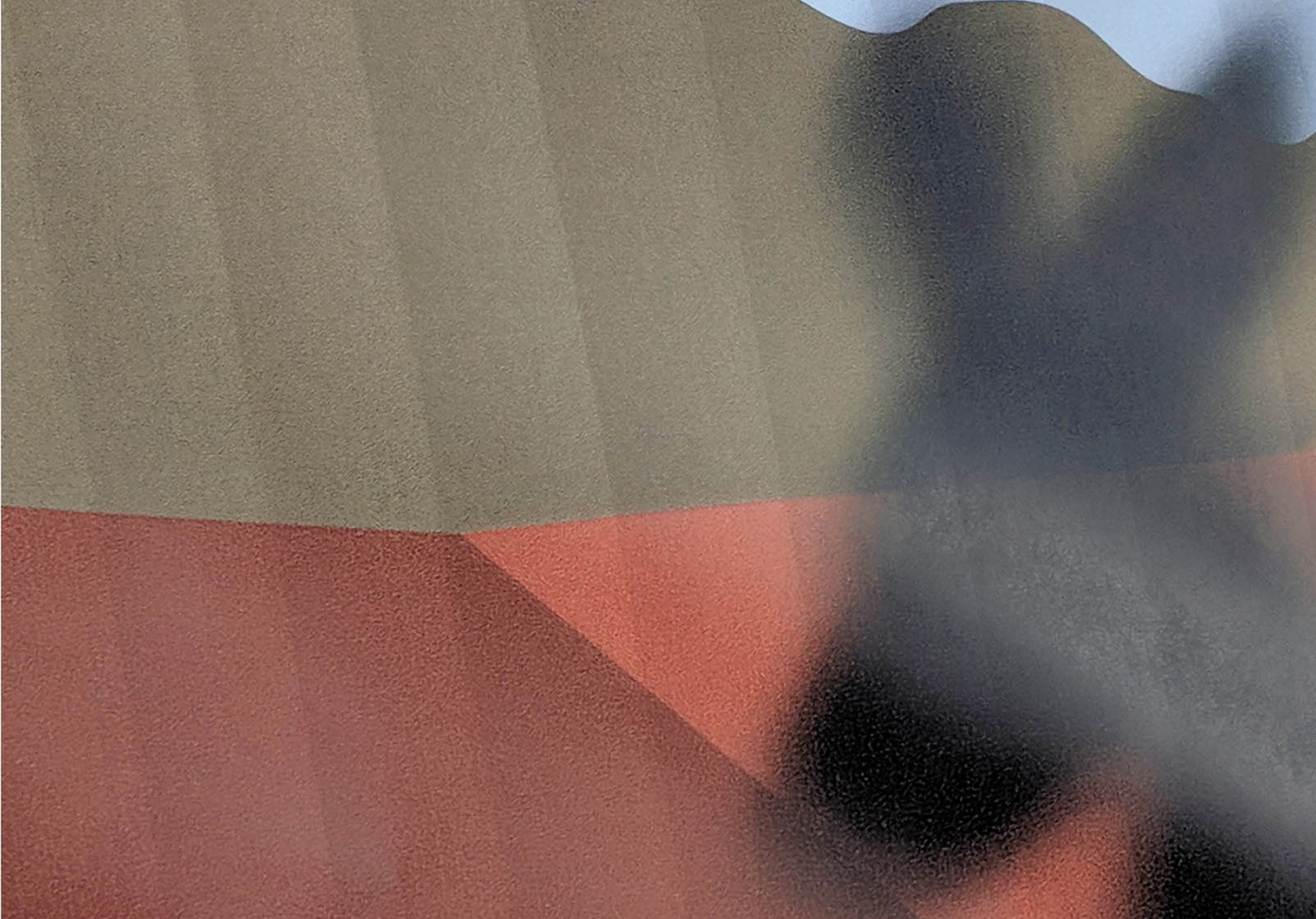
Before PrintFlat is applied. |
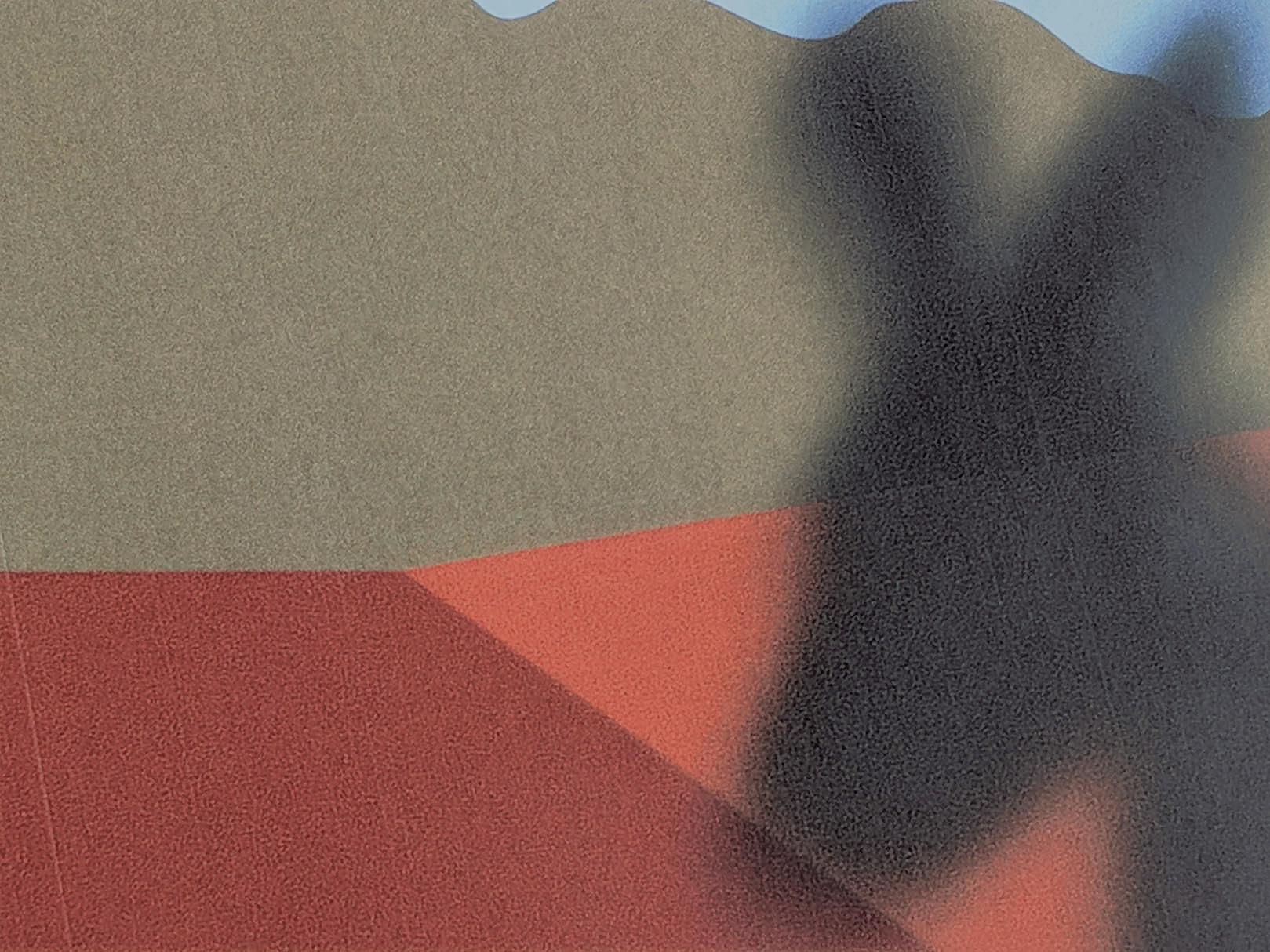
After PrintFlat is applied. |
PrintFlat™ Create – calibration generation tool
Maximize the print quality and color capabilities of your digital inkjet press. PrintFlat Create is a simple standalone application that guides the user through the calibration process, creating a 'fingerprint' calibration specific to their press. Highly versatile, PrintFlat technology supports grayscale and binary printheads, in single-pass and multi-pass inkjet printers. Available as a Windows app, it comes with its own installer and license tool, and generates calibration and/or linearization files for use in ScreenPro™ and other Global Graphics Software products. Customizable, PrintFlat Create is available as a white label application, ready for your branding, logo and styling.
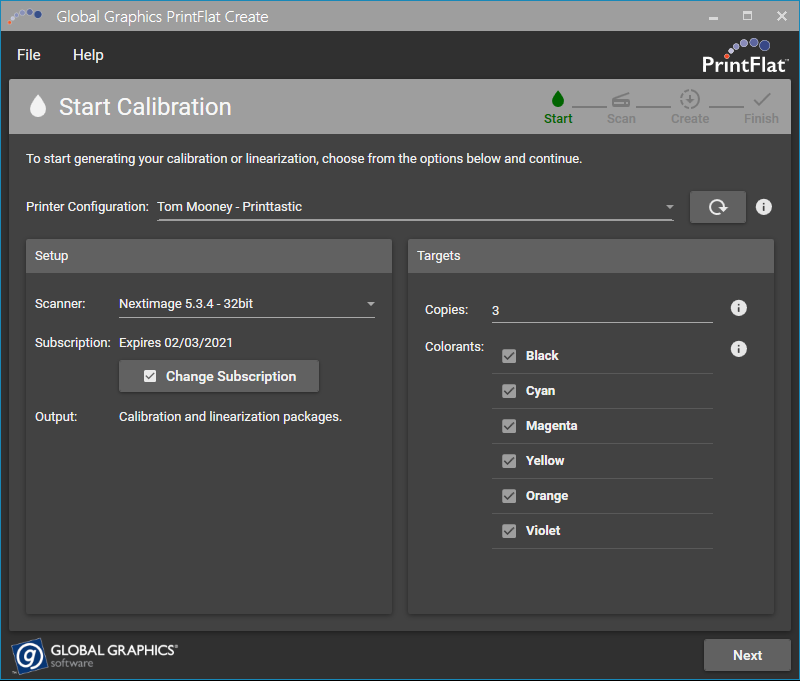
|
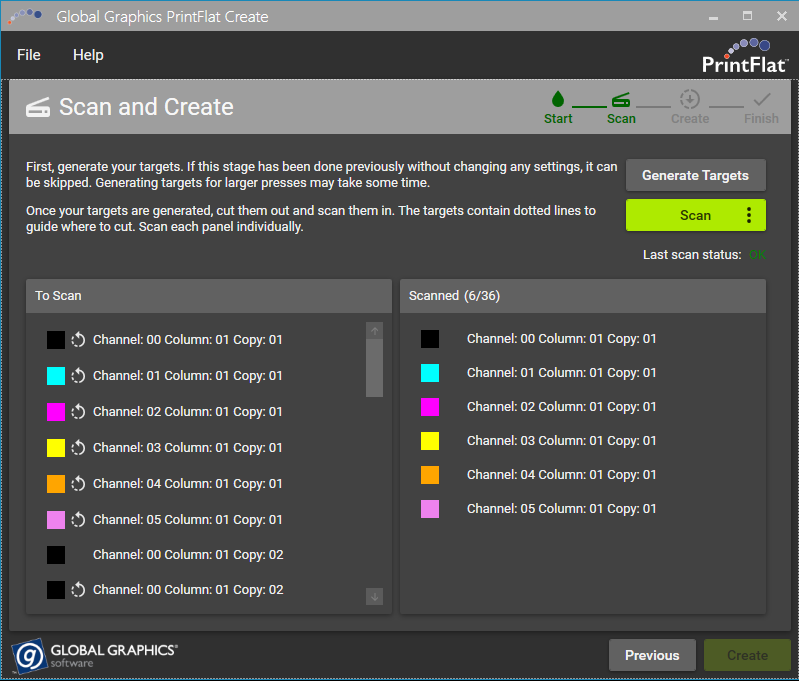
|
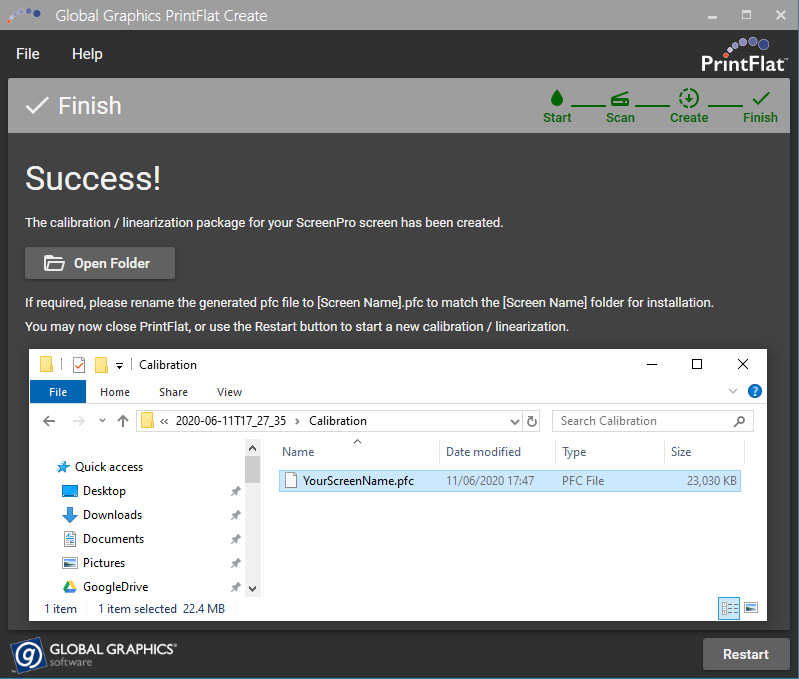
|
PrintFlat Advanced Inkjet Screens™ – quality optimized screen set
From the provenance of the industry-leading Harlequin Dispersed Screens™ (HDS), Global Graphics Software has now evolved the next generation of screening technology, designed specifically for digital inkjet - PrintFlat Advanced Inkjet Screens™ (AIS). PrintFlat AIS screens avoid all of the defects common with traditional screens - no tiling repeat patterns, moiré, worming/dot clustering, mottle, excessive noise, color convergence, etc. Focused on mitigating artifacts in digital inkjet printing, PrintFlat AIS screens will showcase the quality achievable with your printer; the standard screens are:
- Mirror - designed with a micro-structure targeted at countering mottling or “orange peel” effect seen in solid colors caused by shrinkage on drying or curing, typically on non-absorbent or poorly wetting substrates, such as tin cans or some flexible packaging plastics.
- Pearl - an advanced dispersed (FM) screen, optimized for natural images and targeted at addressing chaining and streaking artifacts on more or less absorbent substrates, by disrupting the directionality of those artifacts.
- NEW Opal - combines aspects of both the Mirror and Pearl screens. A mid-tone clustered screen, achieving smoother print with some printhead types and reducing graininess. In particular the Opal screen can help to minimize high frequency ‘streaking’ artifacts sometimes seen when UV-cured inks are printed on difficult substrates.
PrintFlat AIS screens are applicable across a broad range of printers and printheads, and may be configured to the specific application requirements. They may also be used as the basis for development of a custom screen, specific to your press.
PrintFlat Custom AIS Service
Evolving 25 years of Global Graphics Software's screening excellence to address new digital inkjet markets, and when only the ultimate image quality will do, a custom screen can be developed to your exact printer specifications and application requirements via our PrintFlat Custom AIS Service. A custom AIS screen can improve the look and feel of printed images, and be optimized for specific customer applications and/or aesthetic requirements. For instance, when digital printing is being used alongside or in combination with analogue printing, then the screens can be designed to match the analogue output quality, look and feel. Custom PrintFlat AIS screens can be added especially to support monochrome, additional colors, metallic and special effects. Custom AIS screen design can also be highly effective in removing specific print artifacts such as mottling, chaining, noise in highlights, etc. or be used to target more efficient ink use, with precision unclustered screens.
Read more
Datasheets
Case Studies
Videos
Working with you
Every customer is unique
Global Graphics Software has a long history in screening innovation dating back to its patented FM or stochastic screening technology of the 1990s. With the advent of inkjet printing Global Graphics has developed new screening technologies in response to press manufacturers' concerns about image quality. We work closely with our customers to find the best solution to suit your needs. Read about our Technical Services team.

